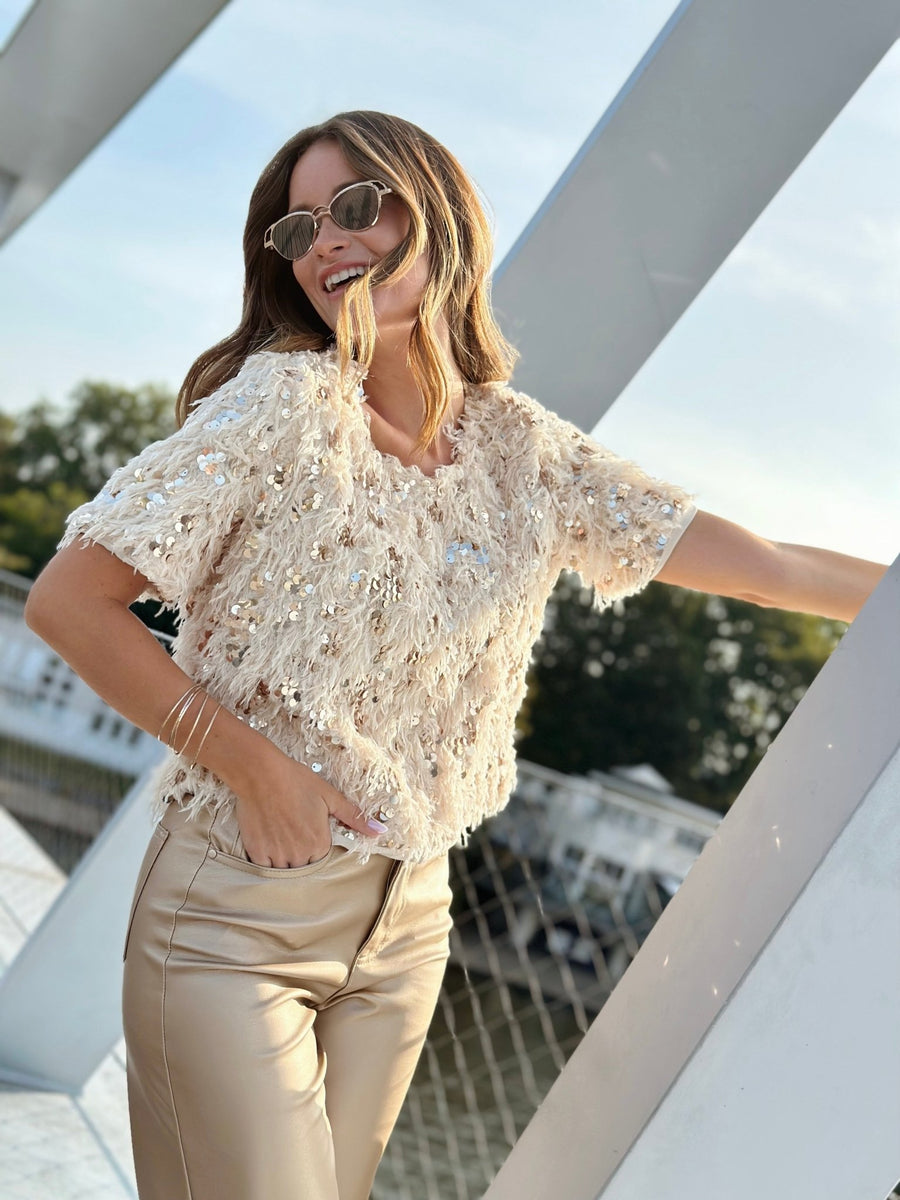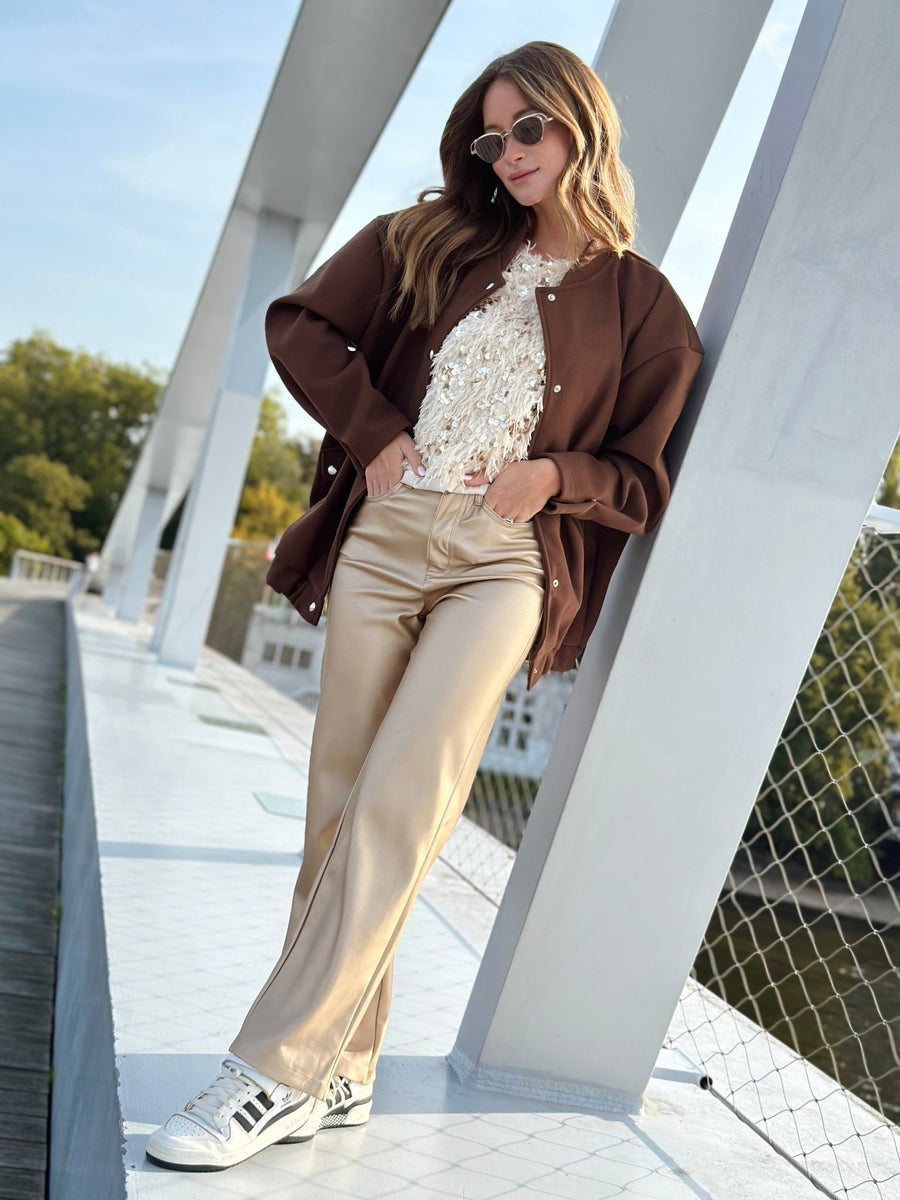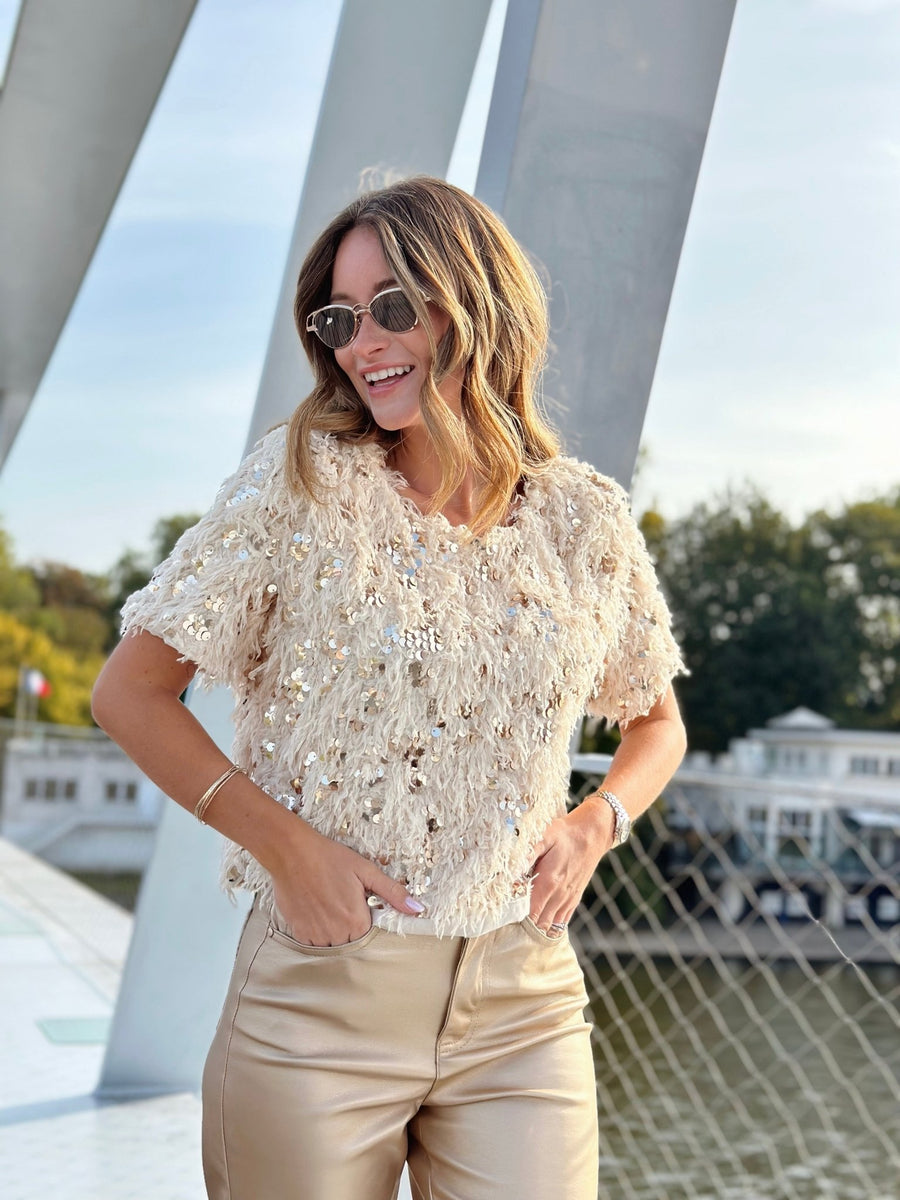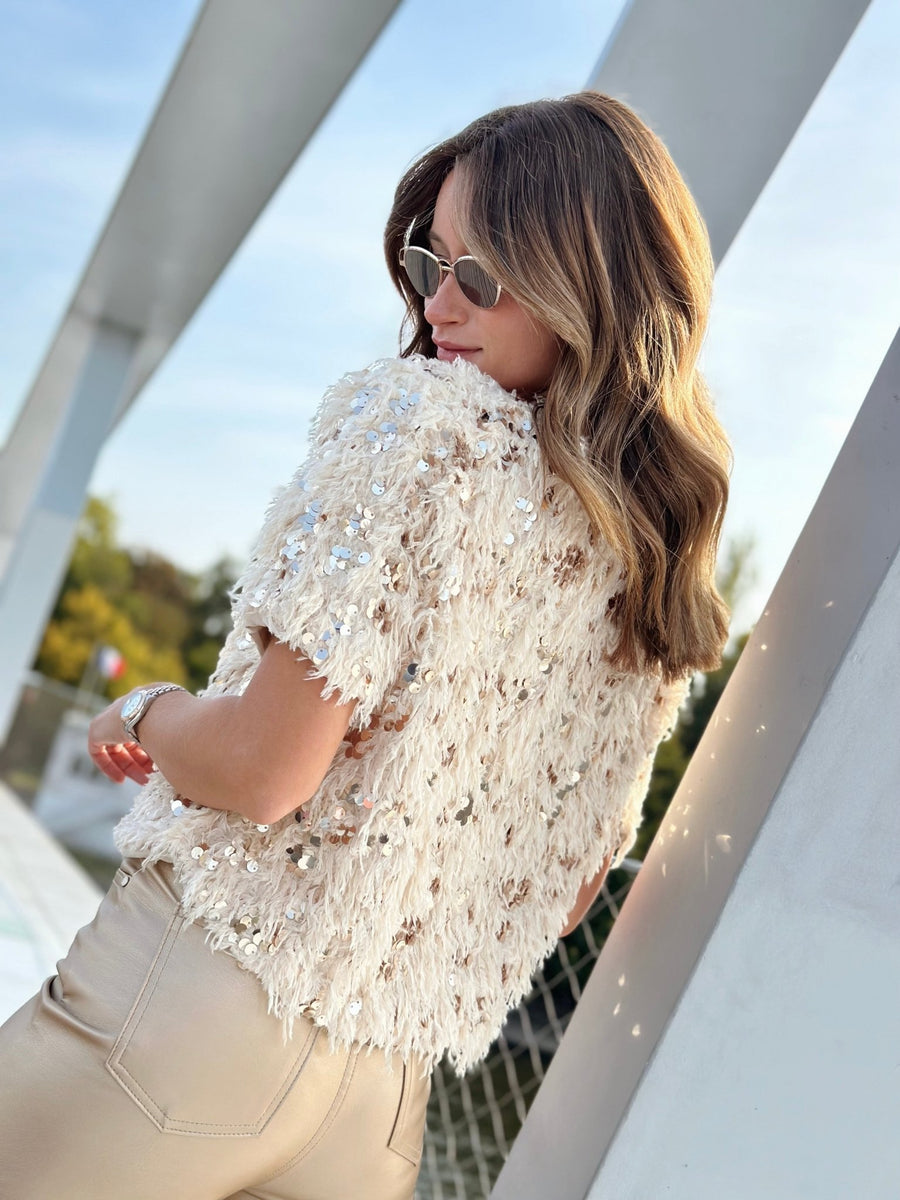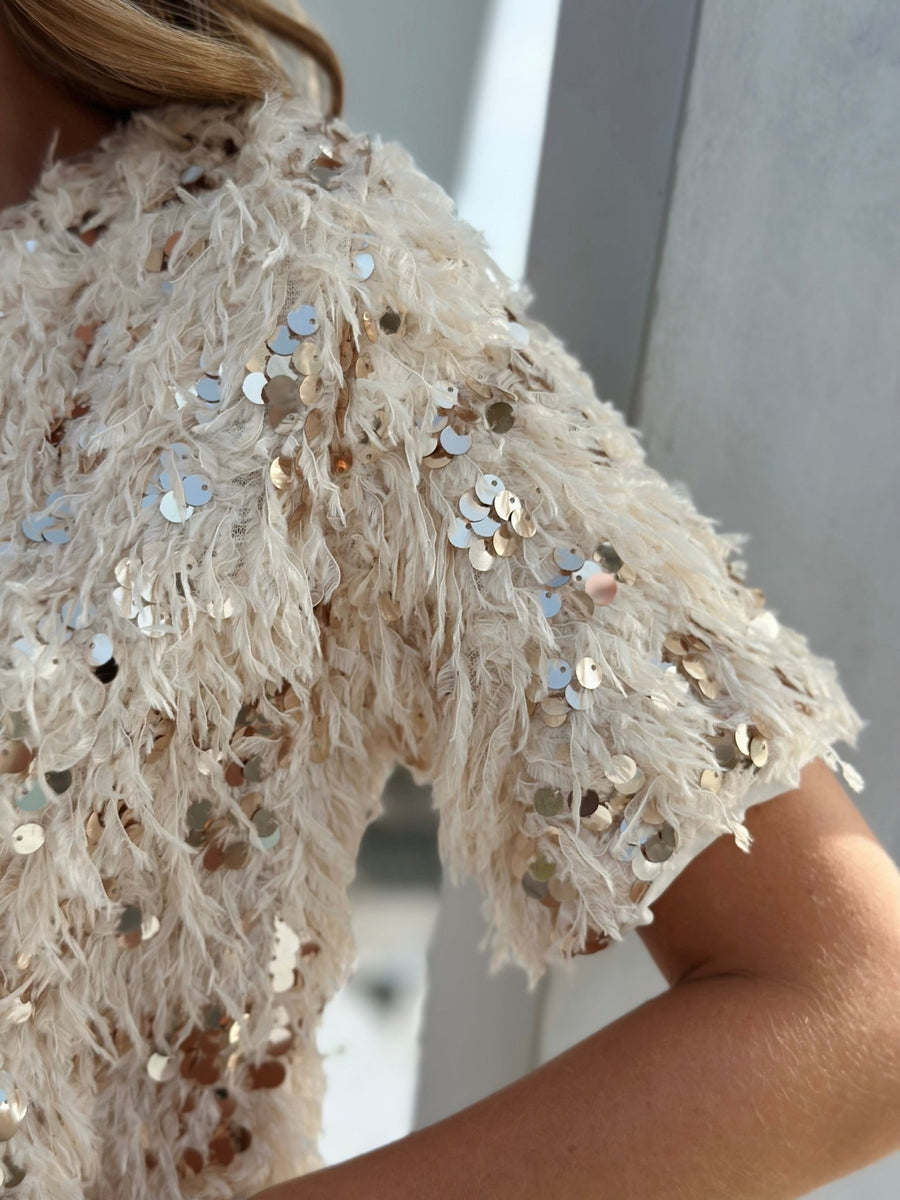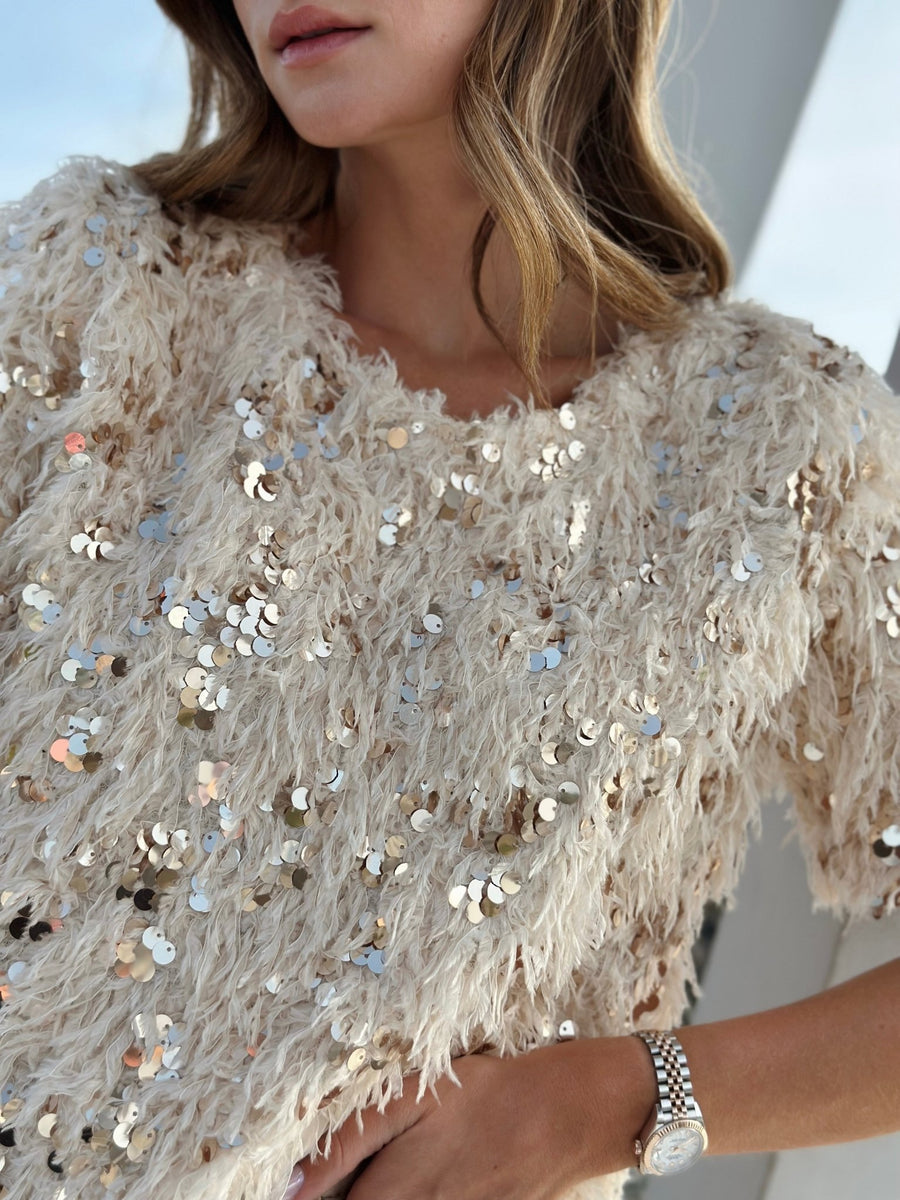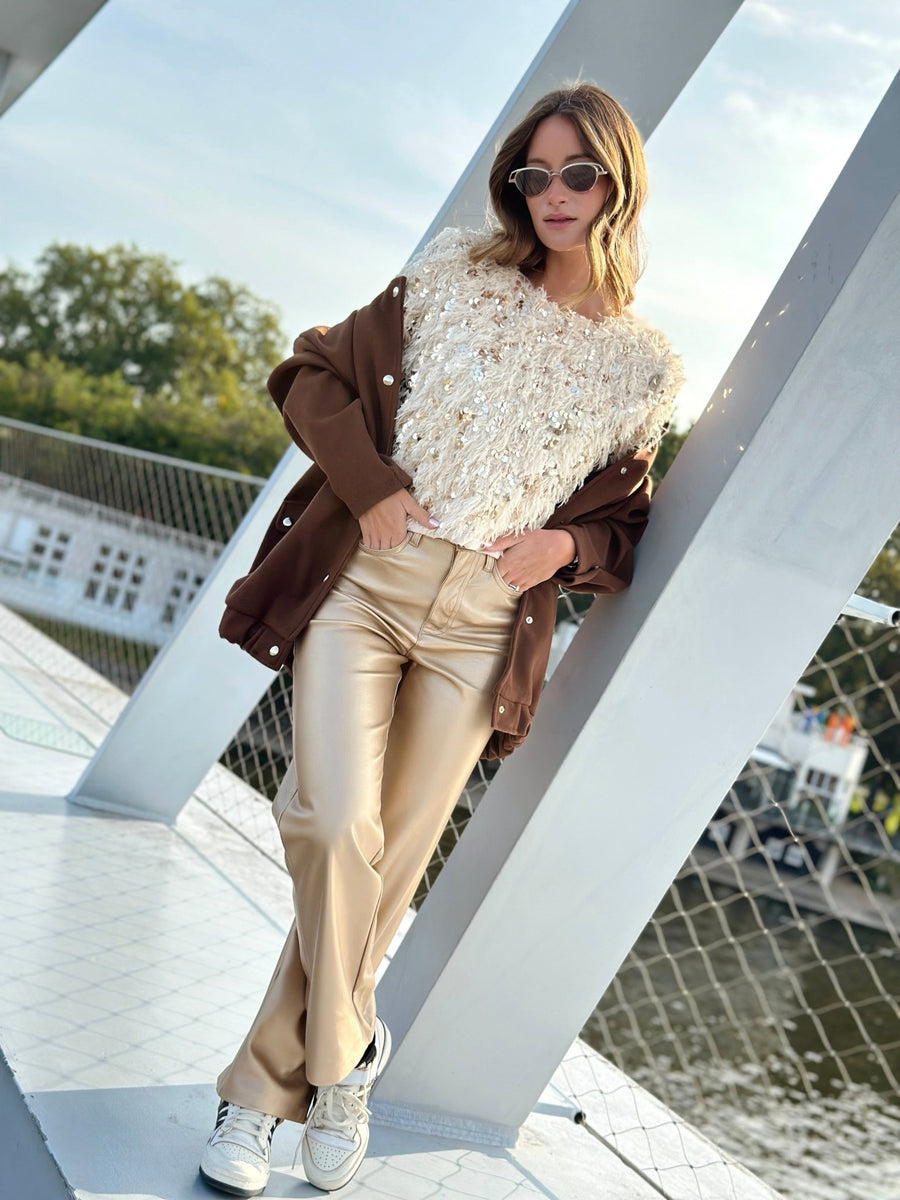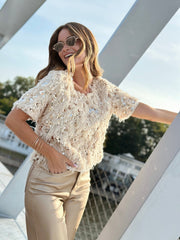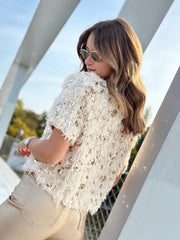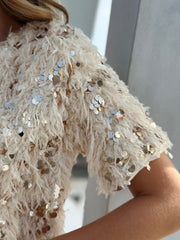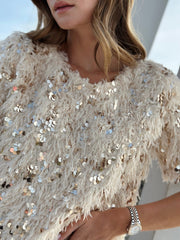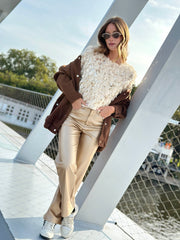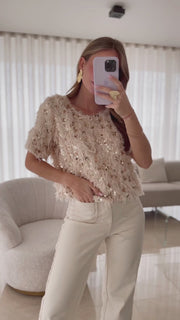Did you know that everyone has colors that suit them best? Colors that flatter them no matter what they do, how they style their hair, and even if they haven't slept all night? Yes, that's the power of colorimetry!
You may have noticed that some colors make you look gray, while others brighten your complexion. If you no longer wear that orange sweater you were given because you find it brings out your redness, that's already colorism.
In this article we explain how it works, how to know your colors and how to avoid those that don't suit you so you always look good.
1) What is colorimetry?
Colorimetry is the science of colors, or the art of wearing colors that flatter you. Each person has their own colorimetry based on their skin color, eye color, and natural hair color. Colorimetry will help you understand your colors , those that flatter you and those in which you feel good.
Colorimetry also has a "psychological" aspect and sometimes reflects character or personality. For example, if you are a very dynamic and sociable person who is not afraid to express themselves in public, you will probably feel better in intense and flashy colors. Conversely, if you are someone more calm, gentle, and discreet, softer colors will suit you perfectly. Be careful, it is not an exact science, but it can have an impact on your colors and your season.
2) What is colorimetry used for?
Colorimetry has an aesthetic purpose first and foremost, that is, it serves to improve appearance. Knowing your colorimetry will help you:
A - Look good and be pretty in your clothes
There's nothing worse than not feeling good in your clothes or wearing things that don't flatter you at all.
Thanks to colorimetry, you'll learn how to wear and combine colors that suit you. For example, if warm colors flatter you, avoid wearing a pale, cool blue the day after a sleepless night. Your complexion will appear dull, and you'll look even more tired.
Conversely, if cool colors suit you, avoid wearing orange or chick yellow if you have any imperfections. Redness and small spots will really stand out if you wear colors that don't suit you.
Knowing your colorimetry is a kind of "wild card" that ensures we always look good even in the event of illness, temporary fatigue or a bad haircut!
B - Buy in an optimized way and avoid making a “fashion faux pas”
To shop conscientiously and make the right choices in stores and online, it's important to know your colors. Knowing your colorimetry helps you never go wrong when shopping!
It's probably happened to you that you fell in love with a piece of clothing in a window display or on a mannequin and absolutely wanted to buy it. You already imagine yourself wearing it and you imagine yourself looking beautiful in it. But once you put it on, the result is not at all what you expected: the color doesn't suit you and doesn't flatter you!
You then have two options: you buy the piece anyway because you think that with the right cut and makeup it could work, you don't buy it and continue looking for your favorite. Spoiler: you will never wear this piece because even with the right makeup it doesn't flatter you!
The solution to buying only pieces you'll actually wear and saving money: know your color profile. Learn which colors make you look beautiful, which patterns make you shine, and which shades to avoid. You'll never make a mistake again, even when shopping online, and your closet will be filled with only pieces that look good on you!
Steph's tip?
When shopping online, like at Gualap.com, don't hesitate to look at product descriptions and customer reviews to ensure the final color of the piece. You'll see that you'll save money and optimize your shopping experience.
C – Get dressed more quickly and easily in the morning
Alarm clock broken? Nothing left to wear? Lacking inspiration? Thanks to colorimetry, even if you get up 10 minutes before leaving for the office, you'll still find something to wear!
By only buying clothes in your color palette, they will all look good on you and go well together.
3) What are the 4 main seasons in colorimetry?
Colorimetry is based on four broad categories called color seasons , or simply " seasons ." Similar to the seasons of the year, there are spring, summer, fall, and winter. Each season is based on a unique combination of warm or cool, light or dark, soft or intense tones.
The warm seasons: spring and autumn
Warm seasons bring together color palettes that are dominated by warm hues (yellow, orange, coral red). These colors give an impression of warmth, brightness, and energy.
A - Spring
Spring is associated with warm, light, and luminous tones. It's a vibrant palette, ideal for skin tones with golden or peach undertones.
Characteristics of autumns:
- Skin: Fair with golden or ivory undertones.
- Hair: Golden blonde, light red or light brown with warm highlights.
- Eyes: Light blue, green or golden hazel.
The ideal colors for spring : Coral, salmon, light turquoise, chick yellow, mint green.
B - Autumn
Autumn is a warm and deep season. Its palette is typically composed of rich, earthy hues reminiscent of fall leaves and sunsets.
Characteristics of autumns:
- Skin: Darker, with golden, beige or olive undertones.
- Hair: Red, auburn or brown with golden highlights.
- Eyes: Green, hazel or deep brown.
The ideal colors for autumn : Burnt orange, olive green, duck blue, burgundy, beige, caramel.
The cold seasons: summer and winter
The cold seasons favor shades with a dominance of shades cold , more or less deep (blue, pink, purple). These color palettes generally have a calmer and more refined rendering.
A - Summer
Summer is a delicate and gentle season. The colors that correspond to it are cool, light, and often slightly gray or pastel.
Characteristics of summers:
- Skin: Fair with pink or porcelain undertones.
- Hair: Ash blonde, light brown or soft gray.
- Eyes: Pale blue, gray or green.
The ideal colors for summer : Lavender, powder pink, sky blue, pearl gray, sea green.
B - Winter
Winter is distinguished by cool, intense shades with plenty of contrast. It's a powerful palette that's suitable for people with strong natural pigmentation.
Characteristics of winters :
- Skin: Very light with porcelain undertones or dark with cool tones.
- Hair: Dark brown, black or salt and pepper.
- Eyes: Steel blue, intense green or very dark brown.
The ideal winter colors : Black, pure white, bright red, navy blue, emerald. To learn everything about winter colors for women, check out our dedicated article.
It's important to remember that the characteristics of each season are not universal. Each season can have exceptions: a natural redhead can certainly be a cold and intense season, like winter, for example.
4) What are the sub-seasons?
To go even further and know exactly which colors will best flatter you, you need to study your "sub-season." Once you know your season and temperature—hot or cold —you can look for your depth and temperature range.
If there are 4 seasons, there are 12 sub-seasons, or 3 sub-seasons per season:
1) The sub-seasons of Spring
Spring is a warm , clear , and bright season . Its sub-seasons vary in the intensity and depth of colors.
- Light Spring : The shades are luminous and soft, ideal for light complexions with golden undertones. Its colors: pastel yellow, peach, light turquoise or pinkish beige.
- Warm Spring : The warmth of the colors is more pronounced, with a golden and sunny dominance. Its colors: coral, bright orange, grass green or ivory.
- Pure (or bright) spring: The colors are vibrant and intense, perfect for people with natural contrasts. Its colors: tomato red, bright sky blue or lemon yellow.
2) The sub-seasons of Summer
Summer is a cold, clear and mild season , characterized by pastel or grayish hues.
- Light Summer : The colors are fresh and light , ideal for light and luminous complexions. Its colors: lavender blue, powder pink, light gray, water green.
- Cold summer : The shades are cold, but light , with a blue dominance. Its colors: sky blue, raspberry, lilac and silver.
- Mild Summer : The colors are muted , as if misty and slightly grayed, which is suitable for the lowest contrasts. Its colors: denim blue, mauve pink, taupe and sage.
3) The sub-seasons of Autumn
Autumn is a warm, deep, and rich season , inspired by earthy and golden tones.
- Warm autumn : The colors are very golden and bright . Its colors: mustard, apricot, rust or camel.
- Mild Autumn : The shades are more muted and less intense , ideal for those with medium contrast and natural tones. Its colors: olive green, taupe brown, salmon and beige.
- Deep Autumn : The colors are dark and saturated , perfect for high-contrast skin tones. Its colors: burgundy, chocolate, forest green or bronze.
4) The sub-seasons of Winter
Winter is a cold, intense and contrasting season , with bright and striking colors that can give a “dramatic” side to outfits.
- Pure (or bright) winter: The colors are very vivid, full and vibrant , without attenuation. Its colors: bright red, black, pure white or electric blue.
- Cold winter : The shades are icy and mainly in blueish tones . Its colors: navy blue, dark purple, magenta pink or steel gray.
- Deep Winter : The colors are dark and powerful , with a very marked contrast. Its colors: black, indigo, blackcurrant, ruby red.
5) What is the difference between season and sub-season?
In colorimetry, the distinction between seasons and sub-seasons makes it possible to precisely define the color palettes that best harmonize with the individual characteristics of each person.
Seasons : This is the basis of colorimetry, and it's the first thing we'll try to define. We identify four main categories, called "seasons," based on color temperature (warm or cool) and intensity (light or deep). These seasons are:
- Spring : warm and light colors.
- Summer : cool and light colors.
- Autumn : warm and deep colors.
- Winter : cold and deep colors.
Sub-seasons : Once the season is defined, the analysis must be further refined. Each season is then subdivided into sub-seasons. A third dimension is incorporated: color saturation (bright or soft).
This approach is known as the “12 seasons method.” It allows for the determination of more specific palettes:
Spring:
-
-
Bright Spring : bright, clear and warm colors.
-
Warm Spring : warm, bright and clear colors.
-
Light Spring : light, bright and warm colors.
-
Summer:
-
-
Soft Summer : soft, light and cool colors.
-
Cold Summer : cool, soft, and light colors.
-
Light Summer : light, cool and soft colors.
-
Autumn:
-
-
Soft Autumn : soft, warm and deep colors.
-
Warm Autumn : warm, soft and deep colors.
-
Deep Autumn : deep, warm and soft colors.
-
Winter:
-
-
Bright Winter : bright, cold and deep colors.
-
Cold Winter : cold, bright and deep colors.
-
Deep Winter : deep, cold and bright colors.
-
This more detailed classification allows us to precisely identify the shades that enhance each person's complexion, eyes, and hair. Here, we consider more subtle nuances than just the four seasons.
6) How do I know my colorimetry and my season?
You may already have an idea of which colors suit you best, and which don't. On the contrary, discovering your season may be a real surprise.
To do this, there are 3 tips for knowing your colorimetry and your season:
Tip #1:
Look at your veins. Look at your wrist or somewhere on your body where they are clearly visible.
- If the veins are blue, you are a cold season.
- If the veins are green, you are in the warm season.
- If you have a mix of blue and green, you are rather neutral and you will have to look at it in more detail.
Tip #2:
Look at yourself. Paying attention to your complexion, your hair, your skin is already a first indication of your season.
- If you have hair with naturally golden highlights, you will probably tend towards a warm season like spring or fall.
- If you have a cool skin tone and notice that golden foundations make you look sallow, you are probably a cold season person like summer or winter.
Tip #3:
The draping technique. Get a large mirror and place it in front of a window to take advantage of natural light. Remove your makeup and try to leave your hair natural (without coloring or bleaching).
Using colored fabrics or clothing: 2 cool colors, 2 warm colors, with different intensities. Place these fabrics on your chest, under your chin and see how they affect your face:
- Do they erase your dark circles, spots and other redness?
- Or do they, on the contrary, highlight all your little flaws and your double chin?
Depending on the effect produced, you will know if warm or cool colors suit you!
Although you can define your own colors at home, nothing beats the advice of a real certified image consultant! To define your sub-season, you will also need to call on an expert to be sure not to make a mistake :)
7) How to use colorimetry for dressing?
Colorimetry can help you in your daily life, whether in clothing, decoration, or even communication. The colors that suit you will help you feel confident and good. You can use them in all areas, but especially in fashion.
To dress according to your colorimetry:
- Find your base colors. Every well-constructed, on-trend outfit is built on a solid foundation. Define your "neutrals" and use them as the foundation of your outfit. For example, if it's fall, wear an ecru t-shirt and camel jeans.
- Dare to add pops of color. Once you've defined your base, spice up and enhance your outfit with bolder colors. For example, wear a leopard jacket over an ecru t-shirt and camel jeans. It's the trendy touch you'll add to your outfit.
- Add accessories that suit you. No outfit would be complete without the right accessories! For example, finish with a gold buckle belt and a stack of gold bracelets to complement your jacket.
A trendy look is therefore built in 3 stages, according to your colorimetry and your current desires!
But be careful, colorimetry is not intended to prevent you from wearing colors that are not in your palette, but simply to help you and highlight your beauty. If a color is not in your palette but you still love it, we advise you to wear it rather far from your face, on the bottom or on a low-cut top, not too close to your neck.
8) 3 tips for wearing your colors well:
- Maximum 3 colors per outfit. If you're in spring, don't mix sky blue with beige and blush pink, for example.
- Wear colors outside your palette on your lower body and focus on colors in your palette around your face.
- Dare to rock a total look in your color. If khaki green suits you perfectly, wear it head to toe for a super chic and modern look.
9) How to organize your dressing room according to its colorimetry?
Here are 4 tips to help you organize your wardrobe and make your daily life easier, based on your colorimetry:
1) Sort out your wardrobe
Look at the pieces you own and determine whether they are warm or cool colors. Forget hues that are the opposite of your color palette. (For example, if you're a summer person, forget oranges and chick yellows. If you're a fall person, forget silvery clothes that will make you look dull and gray. Donate or sell clothes that no longer fit.)
2) Organize and store by color
Once you have only colors that suit you and are the same temperature (warm or cool), you will see that all your pieces go well together! To make it easier to put them together, sort your pieces from lightest to darkest or by color family: pinks with pinks, greens with greens, blues with blues, etc.
Create color combinations. If you particularly like a color combination, such as pink and gray, organize your clothes so you can see the combinations next to each other. You'll save time getting ready in the morning!
3) Store your accessories near your clothes
Since an outfit isn't complete without accessories, keep your belts, earrings, and bracelets close by in your closet. This way, you can create an outfit around an accessory, or vice versa.
With all these tips, you'll be able to get dressed in minutes, or even seconds, without ever having to worry again! And you'll always feel beautiful!
FAQ - Frequently Asked Questions
What if I want to wear colors that are not in my color palette?
Colorimetry isn't meant to restrict or "punish" you from wearing the colors you love! Here are 3 tips to easily incorporate them into your wardrobe:
-
Incorporate them into patterns, for example flowers in colors that are not in your palette, but with a dominant color in yours.
-
Wear them away from your face, on your lower body or with enough neckline so that it doesn't show all your marks or small flaws.
-
Wear them with an accessory in your palette like a scarf, a scarf or a necklace in your color scheme.
Can I wear any color?
Of course! Even if certain colors suit you better, it's important to follow your tastes and feel good about what you wear. Colorimetry is a tool to guide you, but the main thing is that you feel comfortable and confident in your choices.
How do you know if a garment is warm or cool in color?
If you're unsure whether a garment is warm or cool, the secret is to mix it up. Take a silver and gold accessory and mix it with the garment in question. If you think the garment goes better with the silver bracelet, its color is cool. If the garment vibrates better with the gold accessory, its temperature is warm.
Can my colorimetry change over time?
No, your colorimetry will always remain the same, at least your temperature. Temperature is immutable and does not change with tanning, hair bleaching, or the years. However, it is your subseason that can evolve. This subseason is defined by the contrast of your skin, hair, and mouth. As you age, if your contrast decreases or increases, you may go from winter to summer, or from fall to spring, but you will always be warm or cool.
With all these tips, you'll only wear colors that suit you and flatter you. No more tired looks or dull complexions; you'll always be sparkling, no matter the time of year or a bad haircut. ;)
To go even further, find out everything you need to know about colorimetry in our Gualap Fashion Guide ! The training you absolutely need to be fashionable and well-dressed for all occasions.
















